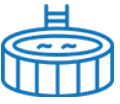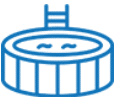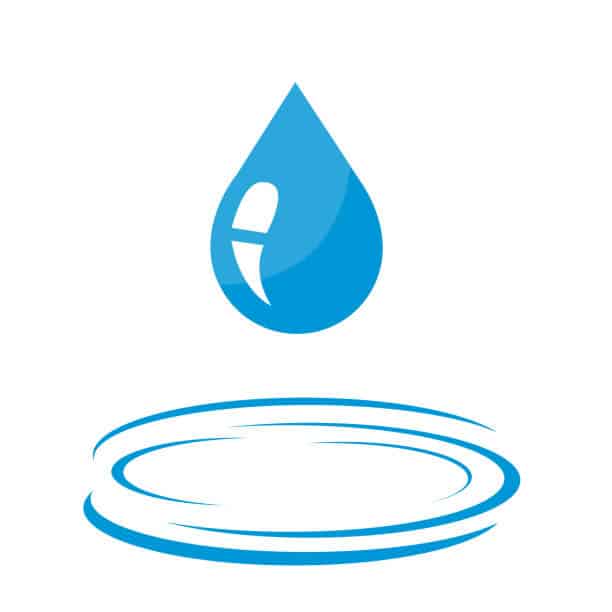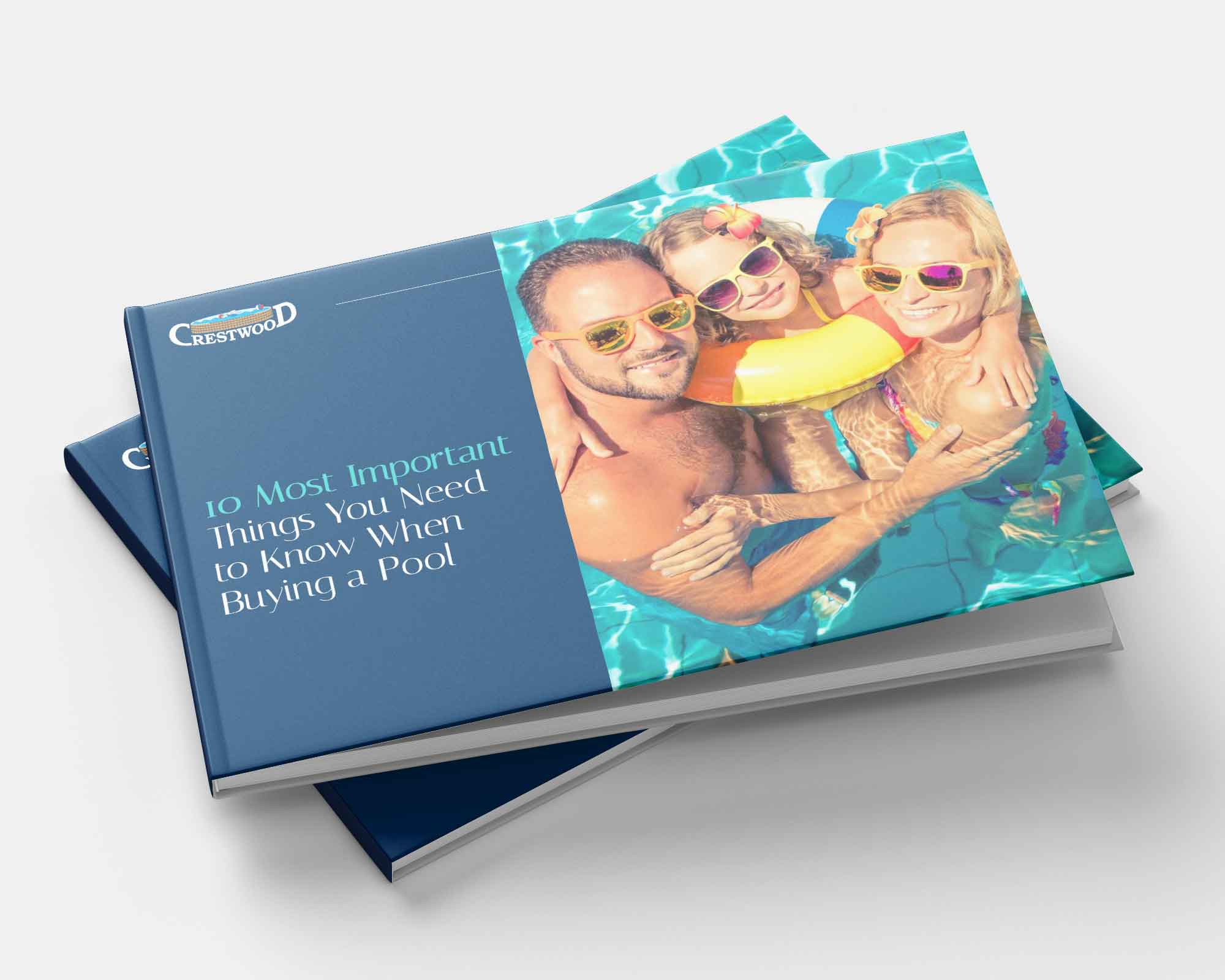- Wooden Pools
- Pool Accessories
- Resources & DIYPool ResourcesPool Resources
- Why Crestwood?
- Builders & Installers
Increase your revenue by installing a
pool in 1-2 days!







The pH level in your pool should be about the same as the pH level of human tears, 7.2, though in the range of 7.2 – 7.6 is optimal. Chlorine is about 10 times more effective at sanitizing your water when the pH is at 7.2 rather than at a high ph level of say 8.2. pH can best be measured with a drop-type test kit versus a test strip, which can be easily misread.
Most often you’ll find the pH level is high; the best way to lower pH is by slowly pouring “Muriatic Acid” (AKA Hydrochloric acid) directly into the pool while the pool pump is on and the water is circulating. However, granular acid (pH Minus or Decreaser) is safer to use alternative than Muriatic Acid. If pH is high, add a small amount of Muriatic Acid and retest the water after about 6 hours of continuous filtration, readjusting pH as needed. This will prevent “bouncing”. If you have a true pH bounce problem, that is typically due to a LOW Total Alkalinity issue; once properly adjusted, the pH should maintain itself well over a period of 1 to 3 weeks depending on rain, use, etc.
The pH level in your pool should be about the same as the pH level of human tears, 7.2, though in the range of 7.2 – 7.6 is optimal. Chlorine is about 10 times more effective at sanitizing your water when the pH is at 7.2 rather than at a high ph level of say 8.2. pH can best be measured with a drop-type test kit versus a test strip, which can be easily misread.
Most often you’ll find the pH level is high; the best way to lower pH is by slowly pouring “Muriatic Acid” (AKA Hydrochloric acid) directly into the pool while the pool pump is on and the water is circulating. However, granular acid (pH Minus or Decreaser) is safer to use alternative than Muriatic Acid. If pH is high, add a small amount of Muriatic Acid and retest the water after about 6 hours of continuous filtration, readjusting pH as needed. This will prevent “bouncing”. If you have a true pH bounce problem, that is typically due to a LOW Total Alkalinity issue; once properly adjusted, the pH should maintain itself well over a period of 1 to 3 weeks depending on rain, use, etc.
The difference between chlorine and bromine is that once chlorine combines with bacteria or harmful organics to kill them, most of the chlorine is used up and will no longer work to sanitize your swimming pool. This “combined chlorine” will be burned off by the next shock treatment and removed from the pool water by the filter. When bromine combines with bacteria in pool water, the bromine is still active but combined with the bacteria and organic matter to neutralize these harmful contaminants. When you shock a bromine pool, the shock treatment only burns off the harmful contaminants, leaving a good portion of the bromine behind in the pool water. The bromine left behind is available to sanitize the pool again. The result is that the volume of bromine tablets needed to sanitize a swimming pool is noticeably less than the volume of chlorine needed to do the same job.
There are definite advantages and disadvantages to using bromine. Bromine is considered better by some pool owners because bromine is usually much less irritating to the skin and eyes. Many pool owners with naturally sensitive skin prefer bromine; however bromine is in the same periodic group as chlorine, so it may not help people who are allergic to chlorine. The disadvantage to bromine is that the chemical costs a good deal more per pound than chlorine. Because it’s so stable, moreover, it can also be harder to wash its smell from your skin or swim wear. Overall, bromine isn’t a great alternative to chlorine for a full size pool, so consider using it for smaller facilities such as hot tubs or Jacuzzis. Bromine is available in tablet form and can be added to pool water using a chemical feeder to dissolve the tablets. Special note: bromine CANNOT be stabilized with cyanuric acid.
While we don’t recommend the use of many pool chemicals (we recommend a mineral pool), there is a pool chemical inventory that all chlorine and salt water pool owners should alway have on-hand. You should always have 1) chlorine tables, 2) pool shock, 3) pool pH up, 4) pool pH down, and 5) a test kit with strips. However once a year you should always balance your pool, and that may require, a) sanitizers like TriChor, DiChlor or Bromine, b) oxidizers such as calcium hypochlorite and chlorine free shock, c) water balancers like alkalinity increaser, calcium hardness increaser and chlorine neutralizer, and d) special chemicals such as algaecides, clarifiers and enzymes.
The pH level in your pool should be about the same as the pH level of human tears, 7.2, though in the range of 7.2 – 7.6 is optimal. Chlorine is about 10 times more effective at sanitizing your water when the pH is at 7.2 rather than at a high ph level of say 8.2. pH can best be measured with a drop-type test kit versus a test strip, which can be easily misread. Most often you’ll find the pH level is high; the best way to lower pH is by slowly pouring “Muriatic Acid” (AKA Hydrochloric acid) directly into the pool while the pool pump is on and the water is circulating. However, granular acid (pH Minus or Decreaser) is safer to use alternative than Muriatic Acid. If pH is high, add a small amount of Muriatic Acid and retest the water after about 6 hours of continuous filtration, readjusting pH as needed. This will prevent “bouncing”. If you have a true pH bounce problem, that is typically due to a LOW Total Alkalinity issue; once properly adjusted, the pH should maintain itself well over a period of 1 to 3 weeks depending on rain, use, etc.
If you’re a chlorine or salt water pool owner, buying pool chemicals in bulk is a smart path to take. However, not all pool chemicals have a long shelf life. Most liquid acids and dry pool chemicals have a long shelf life if they’re kept away from excessive heat and moisture. Products that have the most common short shelf life are a) liquid shock, b) test strips, and c) reagents. All other chemicals may vary based on the supplier’s packaging, and again where and how you store the chemicals. If you live down south where it is excessively hot or warm, you’ll want to store your pool chemicals in rooms that maintain a 35° to 75º temperature.
1. Call Crestwood Pools
2. Learn What’s Best for YOU
3. Achieve Peace of Mind (*even if you don’t choose Crestwood!)

🚨 Exclusive Offer: Limited Time Only! 🚨
📘 Download Your FREE Ultimate Pool Buying Book!
Before you go any further…
Act Fast! Don’t miss this opportunity to make the best choice for your pool project.
👇 Grab Your Free Copy Now and Dive into Pool Buying with Confidence! 👇